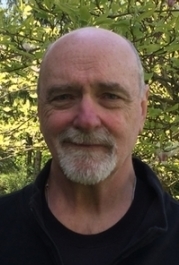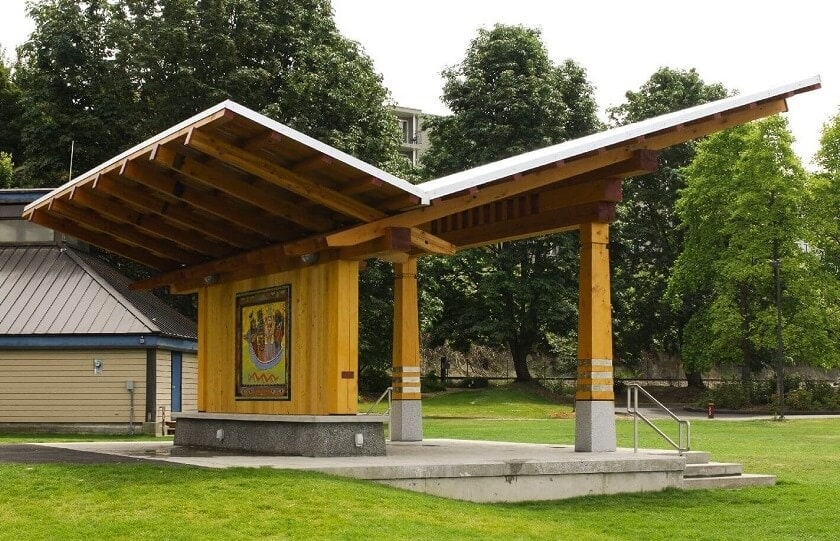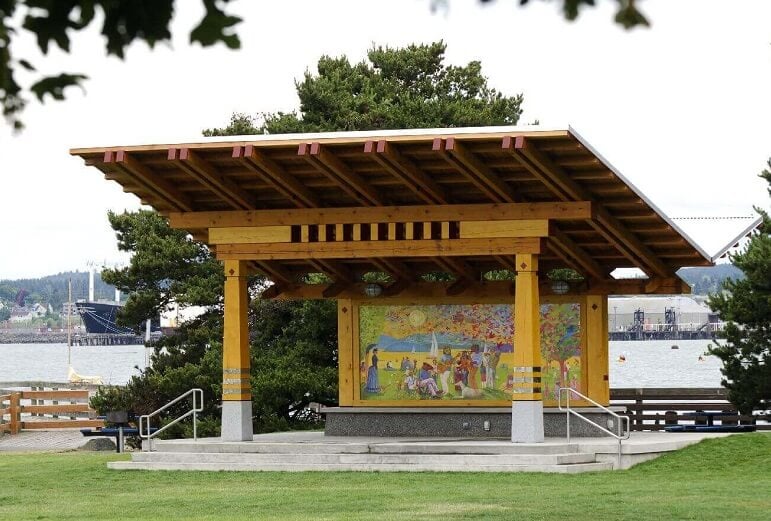
Jeff Arvin, director of the Timber Framers Guild, has a long and profound timber framing history. As a craftsman and employee, and as founder and former owner of Cascade Joinery, Jeff has spent decades honing his skills and realizing his passion for the craft. He first learned about timber framing in an article Ed Levin wrote for Fine Woodworking in 1978, and from books by Tedd Benson and Steward Elliott. He then met Frank and Brenda Baker and Sandy Bennett, who were in the start-up years of Riverbend Timber Framing. And Jeff’s timber framing career had begun.
After years of working at Riverbend, Jeff and his wife felt drawn to the West, and relocated to Bellingham, Washington. Jeff was interested in pushing the traditional boundaries of timber framing. As Jeff says, “And so Bellingham, or the West, actually, seemed like a really good place, a good cultural fit for non-traditional timber framing, and that's what we ended up doing.” Jeff was drawn to the plentitude of big wood in the west, and the Asian influences and the Coast Salish historical traditions that influenced the timber framing culture there.
Jeff is justifiably proud of the accomplishments of the company he founded, Cascade Joinery. As he recalls, “we successfully explored how to take a very traditional craft and build more contemporary buildings… We pushed past the traditional definition of timber framing, the mortise and tenons with pegs and braces. We did a lot of work in minimizing, perhaps, the timber structure, combining it successfully with other systems, for lateral loading, for example. That's a challenge out here in the West, and increasingly in the East, too, but from day one out here, the first thing you think about is earthquakes. And the historical model just doesn't stand up to earthquake loading, so immediately we had to start looking at other ways to prove that our buildings will stand.”
During the process of developing a more contemporary rendition of the timber frame, and from a liability standpoint, Jeff realized the value of an engineer’s input into the design of the structure. He eventually worked with engineering on every project, and that expanded the design of timber frame structures Cascade Joinery was able to construct.

Jeff values the tradition of timber framers constructing public projects. He is particularly proud of the Porch at Boulevard Park in Bellingham, Washington. The structure was inspired by the life of Mark Witter, a Cascade Joinery coworker who died unexpectedly of a heart attack at age 50 in 2004. The pavilion serves as a covered stage for the summer concert series, as well as a shelter and stage for many other activities, both formal and informal.
In 1985, the first conversations began on the East coast about forming a guild. Jeff was unable to attend the first conference, but three of his coworkers from Riverbend did. As he says, “Frank Baker, Sandy Bennett, and one of our designers, went out to that conference, and they just came back blown away about what a great bunch of people it was, and how much they learned, and what a tremendous experience it was.” When the second conference came around in 1986, Jeff was determined to go. And he recalls, “And so I had the same experience. I was blown away. I'm meeting the people. I'm meeting the people that I'd been reading about, and maybe communicating with a little bit, but yeah, it was a big, big deal.” In 1987, Jeff was elected to the board of directors, and then in 1989 became president of the guild.

Though Jeff says that the friendships he has made through the Guild are of primary importance to him, the sharing of knowledge that the Guild fosters was, and continues to be, a tremendous asset to the industry. Many of the attendees at the first Guild conferences are still involved and committed to the mission of sharing information. As he says “the guild moved timber framing forward in quantum leaps. That effort that the people made to come and share information, and learn from each other, made us all better timber framers much more quickly than we could have been working in our smaller groups or in isolation. The learning was certainly a huge thing. Not just the learning of the crafts, but the professionalism that over time I learned, from the example of lots of colleagues, I think is very, very important to the success of timber framing.”
We asked Jeff what he sees in the future for the industry of timber framing, and the role of the Guild in the years to come. He said that despite the fact that for over 30 years the guild has been “working hard out there building the timber frame brand and flying the flag, we still remain a largely unknown entity within the general population.” He sees big demographic changes as the baby boomers’ impact on the market is replaced by millennials’. Although millennials want similar quality of life baby boomers have, they will not have as much money to spend right away. So the challenge for timber framers will be to find ways to economize “while still providing a lot of the same quality of life that we strive to provide with our buildings.”
Jeff sees the trend in housing as leaning towards smaller homes, in walkable, kid-friendly neighborhoods with access to nearby services. He hopes there is a role for highly crafted homes such as timber frames in that paradigm. He hopes the Guild can enable the transition, and that “some of the younger people who are coming to the guild now will be the ones that carry that mantle forward.”.
As executive director of the Timber Framers Guild, Jeff aims to continue to build the organization to best serve the members of the timber framing community.
Jeff Arvin can be reached by email at jeff@tfguild.org, or by phone at 360-746-6571